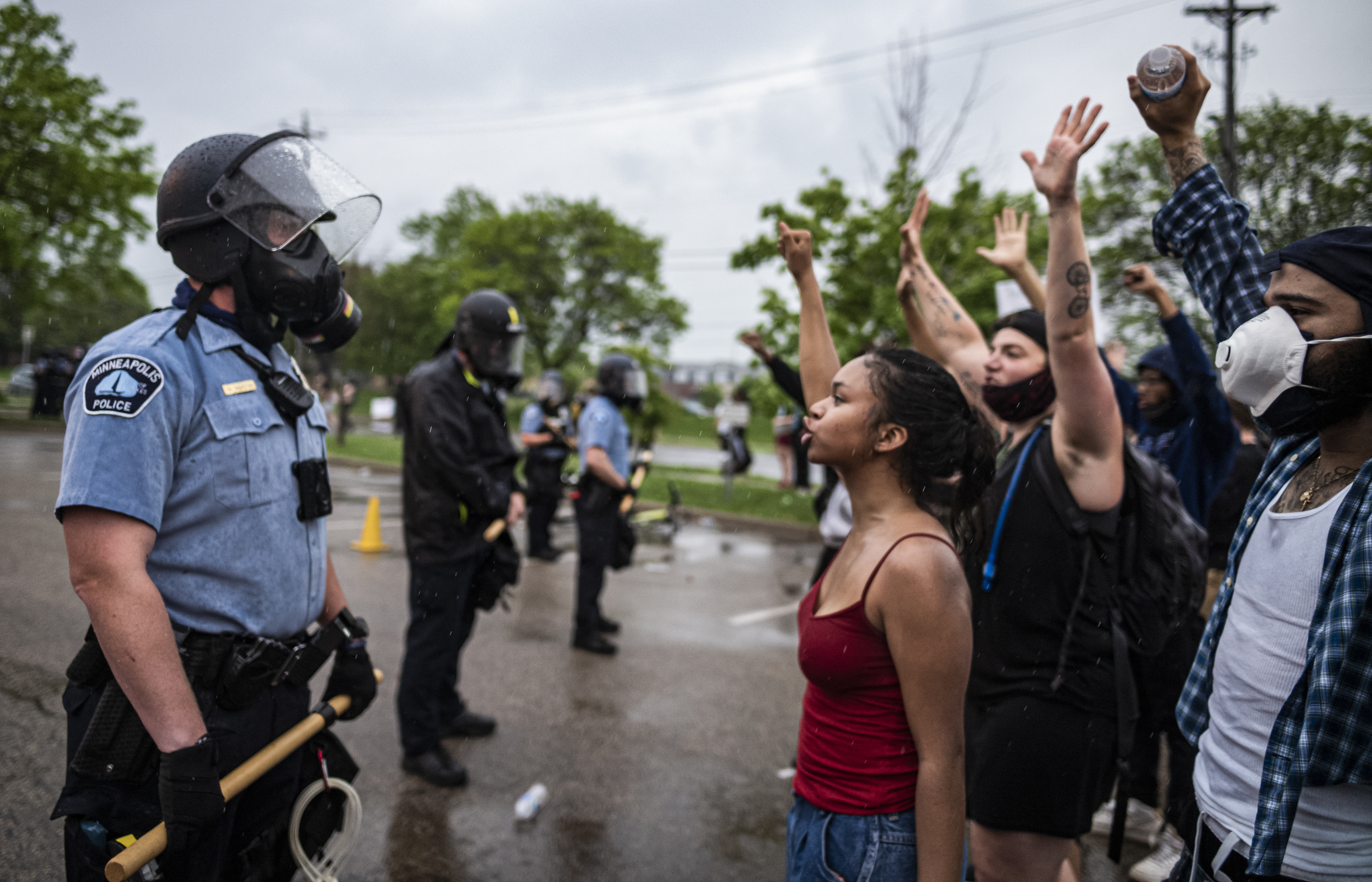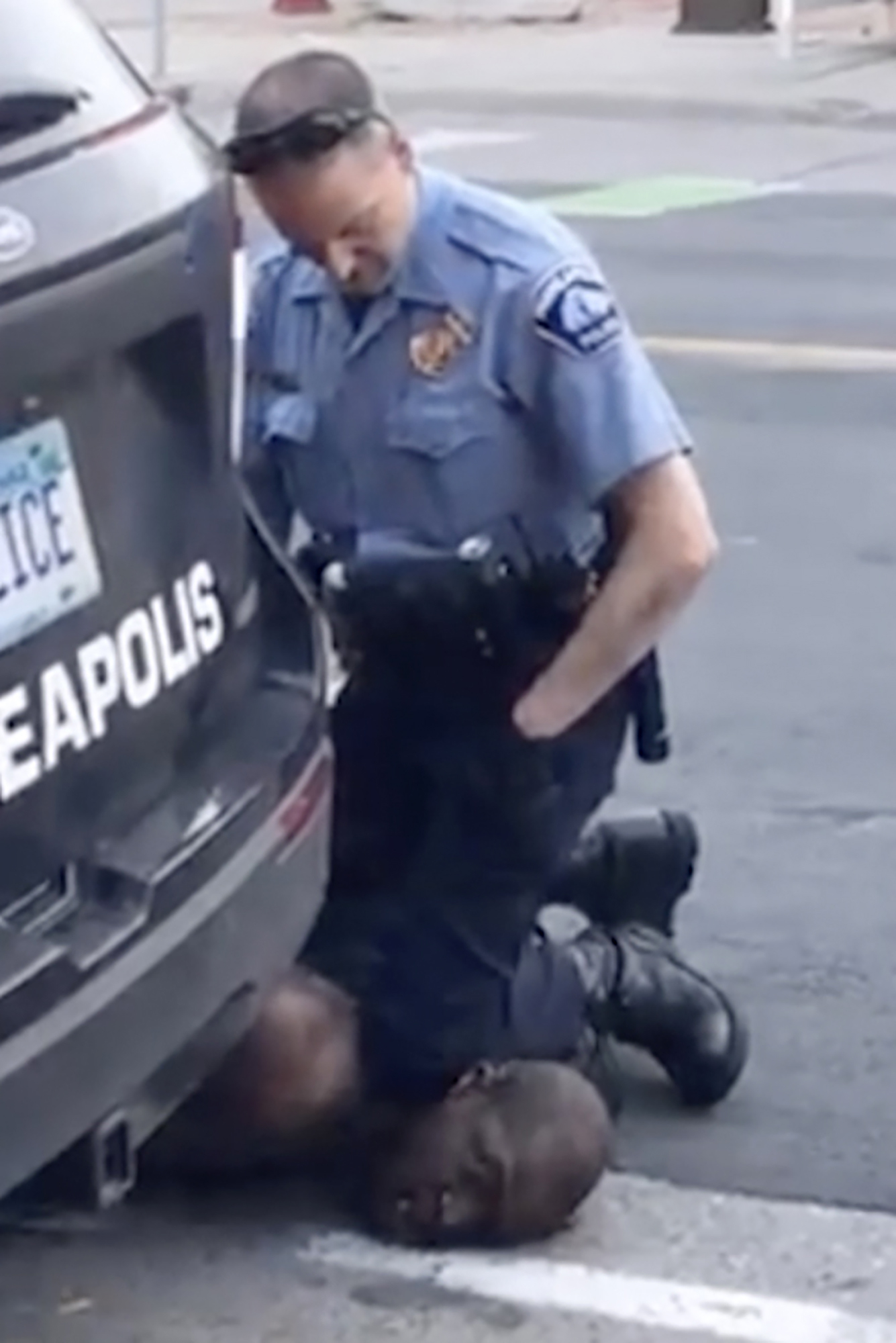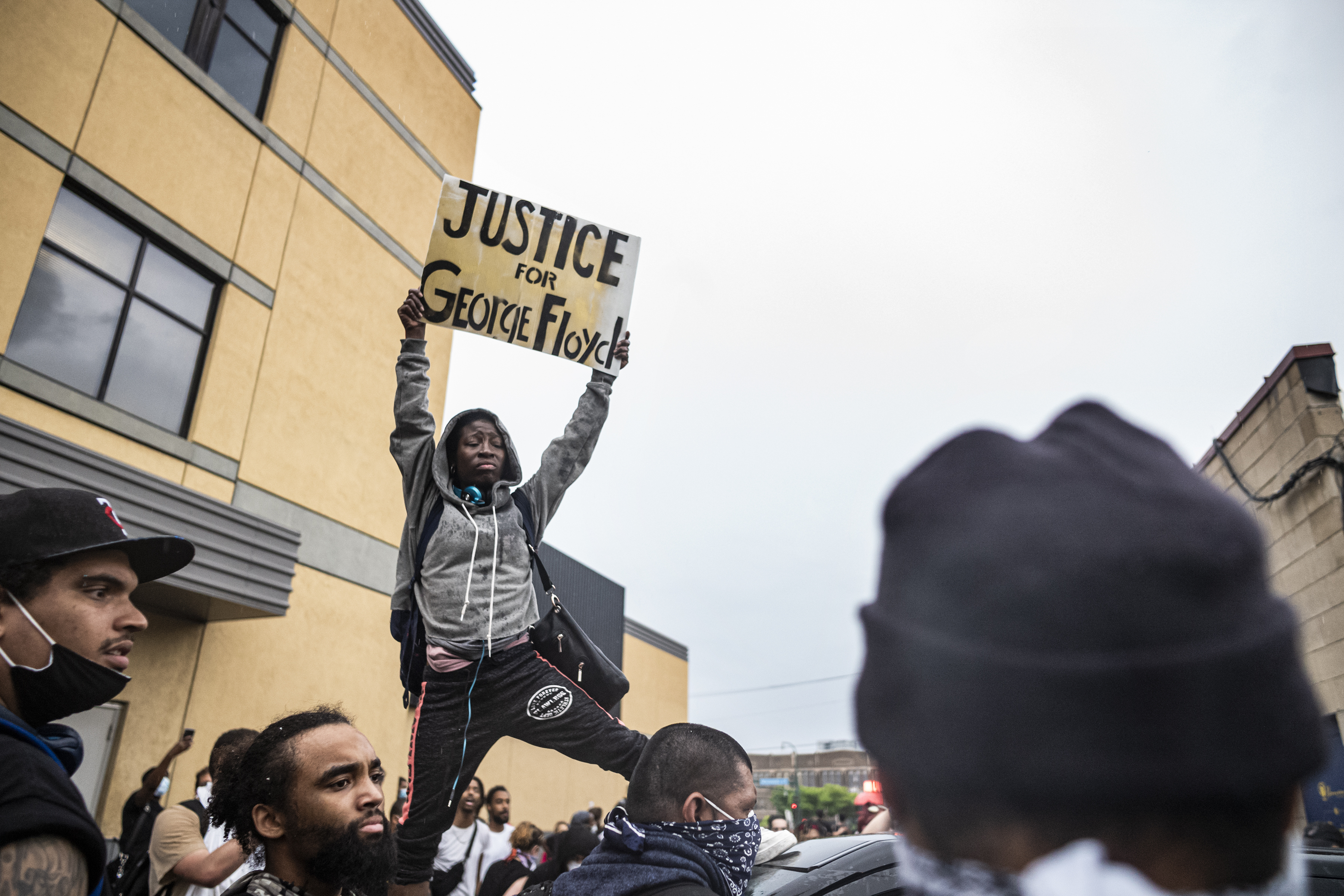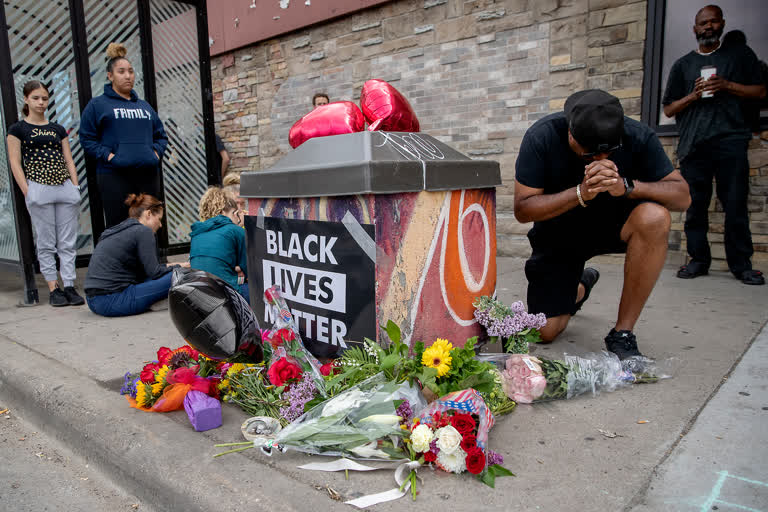Minneapolis: Four Minneapolis officers involved in the arrest of a black man who died in police custody were fired Tuesday, hours after a bystander’s video showed an officer kneeling on the handcuffed man’s neck, even after he pleaded that he could not breathe and stopped moving.
Mayor Jacob Frey announced the firings on Twitter, saying: "This is the right call.”
The man's death on Monday night was under investigation by the FBI and state law enforcement authorities. It immediately drew comparisons to the case of Eric Garner, an unarmed black man who died in 2014 in New York after he was placed in a chokehold by police and pleaded for his life, saying he could not breathe.
In a post on his Facebook page, Frey apologized Tuesday to the black community for the officer's treatment of the man, who was later identified as 46-year-old George Floyd, who worked security at a restaurant.
“Being Black in America should not be a death sentence. For five minutes, we watched a white officer press his knee into a Black man’s neck. Five minutes. When you hear someone calling for help, you’re supposed to help. This officer failed in the most basic, human sense,” Frey posted.

Police said the man matched the description of a suspect in a forgery case at a grocery store, and that he resisted arrest.
The video starts with the shirtless man on the ground and does not show what happened in the moments prior. The unidentified officer is kneeling on his neck, ignoring his pleas. “Please, please, please, I can’t breathe. Please, man,” said Floyd, who has his face against the pavement.
Read more: Twitter is 'interfering' in US election, 'stifling' free speech, alleges Trump
Floyd also moans. One of the officers tells him to “relax.” The man calls for his mother and says: “My stomach hurts, my neck hurts, everything hurts ... I can't breathe.” As bystanders shout their concern, one officer says, “He's talking, so he's breathing.”
But Floyd stops talking and slowly becomes motionless under the officer's restraint. The officer does not remove his knee until the man is loaded onto a gurney by paramedics.
Several witnesses had gathered on a nearby sidewalk, some recording the scene on their phones. The bystanders become increasingly agitated. One man yells repeatedly. “He’s not responsive right now!” Two witnesses, including one woman who said she was a Minneapolis firefighter, yell at the officers to check the man’s pulse. “Check his pulse right now and tell me what it is!” she said.

At one point, an officer says: “Don't do drugs, guys.” And one man yells, “Don't do drugs, bro? What is that? What do you think this is?”
The Hennepin County medical examiner identified Floyd but said the cause of death was pending.
Floyd had worked security for five years at a restaurant called Conga Latin Bistro and rented a home from the restaurant owner, Jovanni Thunstrom.
"He was a good friend, person and a good tenant,” the restaurateur said. “He was family. His co-workers and friends loved him.”
Ben Crump, prominent civil rights and personal injury attorney, said he had been hired by Floyd’s family. He called firing the officers “a good first step on the road to justice” for Floyd but said the city must “fix the policies and training deficiencies that permitted this unlawful killing to occur.”
Also read: Trump honors fallen soldiers as nation battles against virus
Minneapolis Police Chief Medaria Arradondo said the department would conduct a full internal investigation. Police did not identify the officers, but attorney Tom Kelly confirmed he is representing Derek Chauvin, the officer seen with his knee on Floyd's neck. Kelly declined to comment further.
Police did not immediately respond to a request for Chauvin's service record. News accounts show he was one of six officers who fired their weapons in the 2006 death of Wayne Reyes, whom police said pointed a sawed-off shotgun at officers after stabbing two people. Chauvin also shot and wounded a man in 2008 in a struggle after Chauvin and his partner responded to a reported domestic assault.
Protesters filled the intersection Tuesday evening in the street where Floyd died, chanting and carrying banners that read, “I can’t breathe” and “Jail killer KKKops.” They eventually marched about 2 1/2 miles to a city police precinct, with some protesters damaging windows, a squad car and spraying graffiti on the building.

A line of police in riot gear eventually confronted the protesters, firing tear gas and projectiles. Some protesters kicked canisters back toward police. Some protesters stacked shopping carts to make a barricade at a Target store across the street from the station, and through steady rain diminished the crowd, tense skirmishes stretched late into the evening.
Experts on police use of force told The Associated Press that the officer restrained the man too long. They noted the man was under control and no longer fighting. Andrew Scott, a former Boca Raton, Florida, the police chief who now testifies as an expert witness in use-of-force cases, called Floyd's death “a combination of not being trained properly or disregarding their training.”
“He couldn’t move. He was telling them he couldn’t breathe, and they ignored him," Scott said. "I can’t even describe it. It was difficult to watch.”
The New York City officer in the Garner case said he was using a legal manoeuvre called “the seatbelt” to bring down Garner, whom police said had been resisting arrest. But the medical examiner referred to it as a chokehold in the autopsy report and said it contributed to his death. Chokehold manoeuvres are banned under New York police policy.
Also read: Is it the end of 'Open Skies'?
A grand jury later decided against indicting the officers involved in Garner’s death, sparking protests around the country. The New York Police Department ultimately fired the officer who restrained Garner, but it was five years later, after a federal investigation, a city prosecutor’s investigation and an internal misconduct trial.
In Minneapolis, kneeling on a suspect's neck is allowed under the department’s use-of-force policy for officers who have received training in how to compress a neck without applying direct pressure to the airway. It is considered a “non-deadly force option,” according to the department’s policy handbook.

A chokehold is considered a deadly force option and involves someone obstructing the airway. According to the department’s use-of-force policy, officers are to use only an amount of force necessary that would be objectively reasonable.
Before the officers were fired, the police union asked the public to wait for the investigation to take its course and not to “rush to judgment and immediately condemn our officers." Messages left with the union after the firings were not returned.
The Hennepin County Attorney's Office, which would handle any prosecution of police on state criminal charges, said in a statement that it was “shocked and saddened” by the video and pledged to handle the case fairly. The FBI is investigating whether the officers willfully deprived Floyd of his rights. If those federal civil rights charges are brought, they would be handled by the U.S. Attorney's Office in Minnesota, which declined comment.
The death came amid outrage over the death of Ahmaud Arbery, who was fatally shot Feb. 23 in Georgia after a white father and son pursued the 25-year-old black man they had spotted running in their subdivision. More than two months passed before charges were brought. Crump also represents Arbery's father.
Also read: Trump says he's taking malaria drug to protect against virus
(With inputs from AP)



